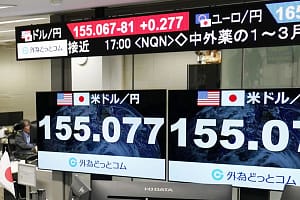Container xChange have unveiled its June container market forecaster, revealing trends and insights that are shaping the global container shipping market.
The forecaster highlights the dramatic rise in container prices in China recently, which surged by 45% in May.
Meanwhile, container prices have remained relatively stable in the US and Europe.
Key findings also include insights into the impact of port congestion and carrier network changes on market dynamics, the cautious restocking behavior of US retailers, and the year-to-date growth in inbound TEUs at major US ports.
China’s volatile container prices surge amid early peak season
The container trading market in China has been highly volatile throughout the month of May, with container prices rising beyond expectations. Average container prices for 40 ft high cube cargo-worthy containers across key ports in China rose by 45% in May, from $2240 in April to $3250 in May 2024. These were around $1698 in November 2023 and around $7178 in September 2021 (at the height of the Covid boom).
The surge in container prices is driven by a significant lack of capacity (containers and vessels) that coincides with an unexpected increase in demand for capacity.
Firstly, capacity is low because of Red Sea diversions stretching carriers’ networks thin—essentially carriers wanting to maintain weekly sailings have to deploy additional vessels on their Asia-Europe loops. This decreases the margin for error—making the management of unexpected disruptions very challenging.
Moreover, the diversions and the subsequent “rebalancing” of carrier networks have led to downstream disruptions like port congestion as short-term changes in carrier networks and “vessel bunching” have led to some ports facing spikes in throughput. Similar to what can be expected on a highway, throughput spikes then lead to traffic jams—here of vessels and containers.
Secondly, we have seen an unexpected increase in demand for capacity—as shippers are pulling shipments forward in order to avoid the uncertainty of future disruptions in the rest of the 2024.
“Shippers are pulling shipment dates forward, resulting in a temporary demand for shipping capacity. This is reflected in higher throughput volumes, despite underlying consumer demand and factory orders being weak.
For instance, consumer spending in the US increased by only 2% in the first quarter of 2024, below the advance estimate of 2.5% and the lowest increase in three quarters. Also, retail inventories excluding autos in the US increased by only 0.3% month-over-month in April 2024, following a 0.4% decline in March 2024, indicating only cautious restocking by retailers. Additionally, new orders for manufactured goods in April rose by $4.3 billion, a 0.7% increase to $588.2 billion, while shipments increased by $5.9 billion or 1% to $590.2 billion, signaling robust demand in the shipping and container logistics market.” Roeloffs explained.
But contrary to the weak underlying structural demand side, the year-to-date container TEUs comparison from 2024 to 2023 shows an average 18% increase in inbound TEUs at major US ports.
Key US ports such as Los Angeles, Long Beach, and Port of Vancouver reported significant year-on-year growth rates, ranging from 28.1% to 22.37%.
Short-term Price Bubble
As we monitor the market closely, it’s evident that the current spike in container prices is not sustainable in the long term, as it is not backed by strong underlying demand. Concerns over labor markets and high-interest rates imply that consumers are likely to reduce spending, which could lead to a decline in demand for goods and, consequently, a reduction in shipping volumes in the near term, unless the demand revival becomes stronger and the supply capacity soak up intensifies.
Industry participants surveyed during May 2024 overwhelmingly indicated expectations of higher container price hikes. The Container Price Sentiment Index (xCPSI) exhibited significant volatility in its readings, reflecting the challenges arising from the Iran-Israel conflict, evolving geopolitical economic trade relationships, and persistent climatic changes causing droughts, compelling businesses to fortify their supply chains.
Market Outlook
“Given these factors, we expect that the elevated container prices we’ve seen in recent months may not be sustainable,” shared Christian Roeloffs, co-founder and CEO of Container xChange. “As the initial rush to restock inventories subsides and the real demand from consumers and businesses remains flat, we anticipate a stabilization or even a decline in container prices in the mid-term. The market is showing signs of volatility driven by short-term factors, rather than a sustained increase in demand.”
The underlying macroeconomic indicators suggest a more tempered outlook for the coming months. Consumer spending growth remains sluggish, and retail inventories are only modestly increasing. Additionally, the subdued consumer sentiment reflects ongoing concerns about labor markets and inflation, which are likely to dampen consumer demand further.






Leave a Comment